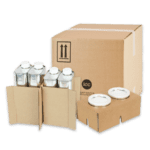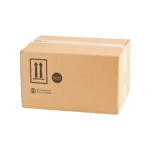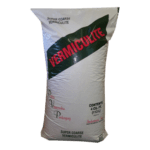
UN Packaging Manufactured Abroad
When it comes to the transportation of dangerous goods, the United Nations (UN) has established a set of regulations and packaging standards to ensure the safe handling and movement of these materials. The UN packaging regulations are designed to provide a consistent standard for the containment and protection of dangerous goods during the various forms of transport.
One common question that arises is whether it is permissible to use UN packaging that was manufactured in a different country than the one where the goods are being shipped. The answer to this question is that the use of UN packaging from another country is generally allowed, provided the packaging meets the applicable UN performance standards as well as other requirements.
If the UN packaging meets the necessary requirements, it can generally be used for the transport of dangerous goods as long as the closing instructions are followed, even if it was manufactured outside of the country of origin. This allows for greater flexibility and accessibility in the supply and use of UN-certified packaging. But where in the domestic regulations are the requirements for the use of UN packaging manufactured abroad referenced?
When UN Packaging is Manufactured Abroad
In the United States, UN packaging manufactured outside the country is referenced in the 49CFR at 173.24 (d). Here it says UN standard packaging manufactured outside the United States, in accordance with national or international regulations based on the UN Recommendations may be imported and used and is considered to be an authorized packaging. But there are some limitations. The UN packaging must fully conform to the provisions in the UN Recommendations and the requirements of the 49CFR in parts 178 and 179. This means the packaging must be capable of passing the prescribed tests in part 178 applicable to that standard and the competent authority of the country of manufacture provides reciprocal treatment for UN standard packaging manufactured in the United States. In a nutshell if the UN packaging is manufactured abroad, you must be sure it is capable of passing the UN tests referenced in the UN Recommendations and the 49CFR and that the country it comes from reciprocally allows UN packaging produced in the United States to be used. In Canada, TDG mentions UN packaging manufactured abroad at 5.6 (b). Here it says that a means of containment that is manufactured outside of Canada must be in compliance with Chapter 6.1, 6.3 or 6.5 of the UN Recommendations and with the national regulations of the country of manufacture. So as long as the packaging meets the requirements of the UN recommendations listed above, it is allowed to be used within Canada. In terms of the United States and Canada, there should be no problem using packaging produced in either of these countries as both countries UN packaging requirements were modeled after the UN recommendations, and these countries have a reciprocal agreement with each other. In any case, the best bet is to obtain a UN test certificate or a UN certificate of approval from the country of origin to make sure the packaging meets the requirements mentioned.
Here at ICC The Compliance Center, we offer UN packaging that meets all of the requirements above. Do you have questions about UN Packaging? Take a look at our UN Packaging FAQ or contact our team of experts at 855.734.5469 or send us an email, we’re happy to help.
Stay up to date and sign up for our newsletter!
We have all the products, services and training you need to ensure your staff is properly trained and informed.
 Custom Packaging Custom Packaging |
 4G UN Lithium 4G UN LithiumBattery Box |
 Vermiculate Vermiculate |





